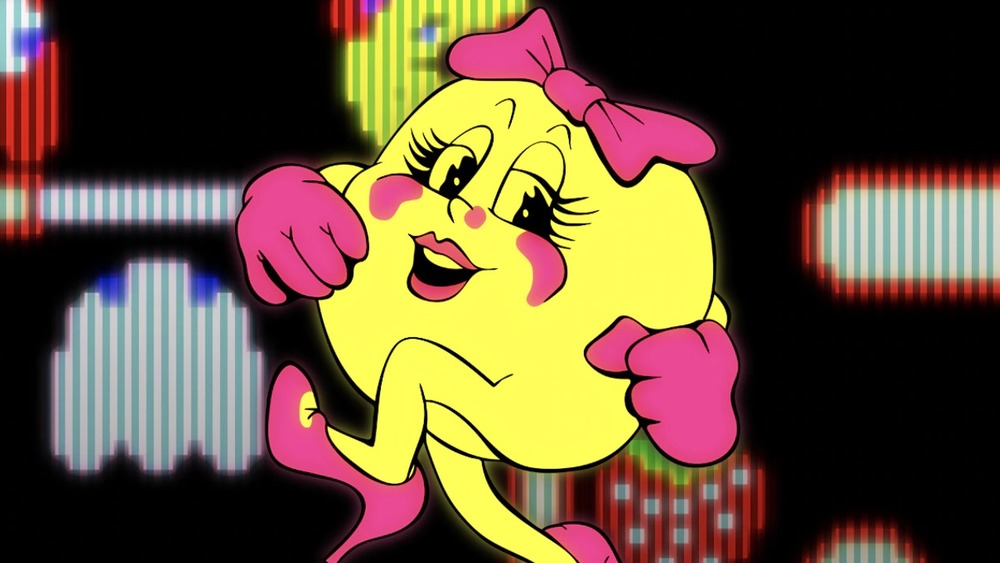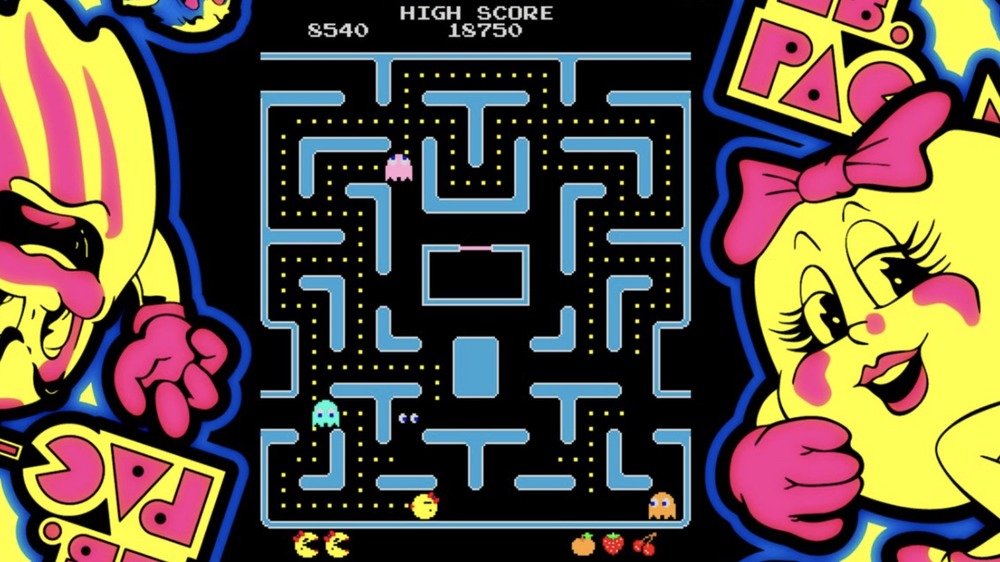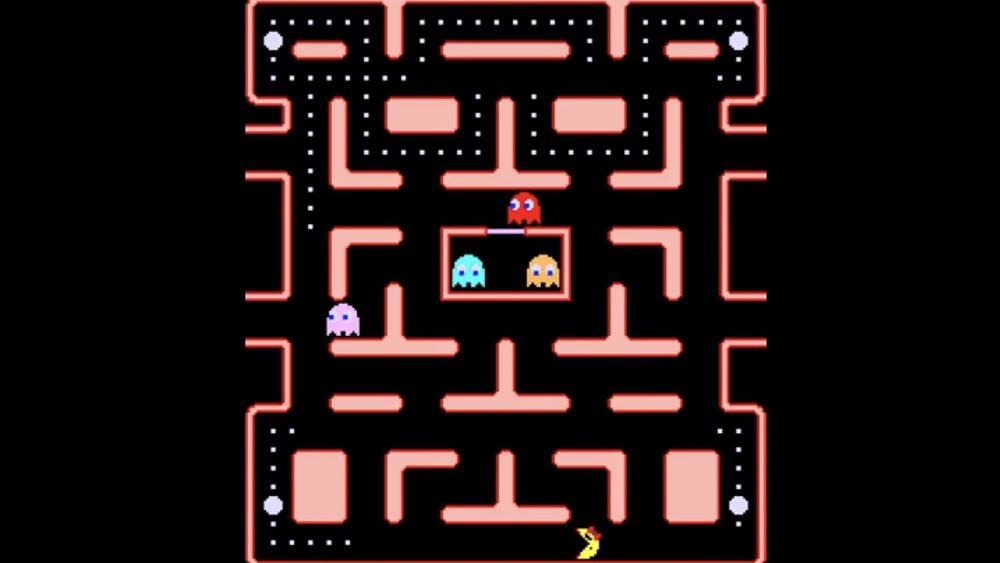This Is Why Ms. Pac-Man Almost Never Happened
Today, Ms. Pac-Man seems ubiquitous: You can find her in arcades, restaurants, truck stops, and many other venues across the U.S. — even in places where you don't normally find a ton of video games. This classic arcade title from 1982 had, according to USGamer, earned over $1 billion in revenue by 1987 and remains a best-seller today, with 117,000 units sold as of 2017, FastCompany reports. That makes it one of the best-selling arcade games in history, alongside Pac-Man itself.
But the history of Ms. Pac-Man isn't as straightforward as you might imagine. In fact, the game was not developed by Pac-Man's creator, Namco, as a sequel to its popular game featuring a yellow dude shaped like a circle with a pie piece cut out. On top of that, the game almost didn't happen. Here's the unusual story of Pac-Man's female counterpart and how she came to be despite the odds against her.
Ms. Pac-Man was created by a group of MIT dropouts
Back in the late '70s, a group of MIT students started dabbling in the arcade business as a side project. Eventually, this involved creating an ultimately profitable enhancement kit for Atari's Missile Command game, so they left MIT and started their own company, General Computer Company (GCC), to keep doing the work. And they decided to create their next enhancement kit for Pac-Man. They were careful not to infringe upon Atari's copyrights with the game Crazy Otto, but that didn't stop Atari from trying to sue GCC, who learned about Atari's planned tactic and sued first.
GCC turned out to be too savvy for Atari, so Atari offered GCC a development contract instead. Under that deal, the former students could sell enhancement kits with the manufacturers' permission, so GCC next went to Midway. President Dave Marofske found it refreshing to be dealing with people asking permission to produce Pac-Man merch and decided to see what the group was working on. Midway was looking for the next new thing, and that thing was Crazy Otto, which GCC then turned into a full-fledged Pac-Man sequel, with Namco's knowledge and help.
Ms. Pac-Man improves on the formula
GCC developed Ms. Pac-Man to be an improved version of Pac-Man, making its appearance as the sequel natural. The developers introduced four new mazes to vary the gameplay and made sure the ghosts were more randomized and "smart," so their movements wouldn't fall into easily memorized patterns. A new ghost, Sue — whose name is based on GCC creator Doug Macrae's sister — appears.
Ms. Pac-Man included new music, level indicators (fruit icons), an animated movie marquee, and cartoon animations that told the story of Pac-Man and Ms. Pac-Man's romance. The game also had brighter walls to streamline gameplay. Additionally, GCC developed some copy protection circuitry that stopped others from easily copying Ms. Pac-Man.
"The original Pac-Man stands tall as one of the greatest arcade games of all time and without it, Ms. Pac-Man would never exist," said a VideoChums retrospective. "With that said; Ms. Pac-Man took everything great about the original and added a layer of unpredictability which makes the gameplay much more exciting and fulfilling."
But, basically, Ms. Pac-Man started out as a home-brewed, unauthorized version of Pac-Man that later became an approved sequel. How often does that happen in real life?



